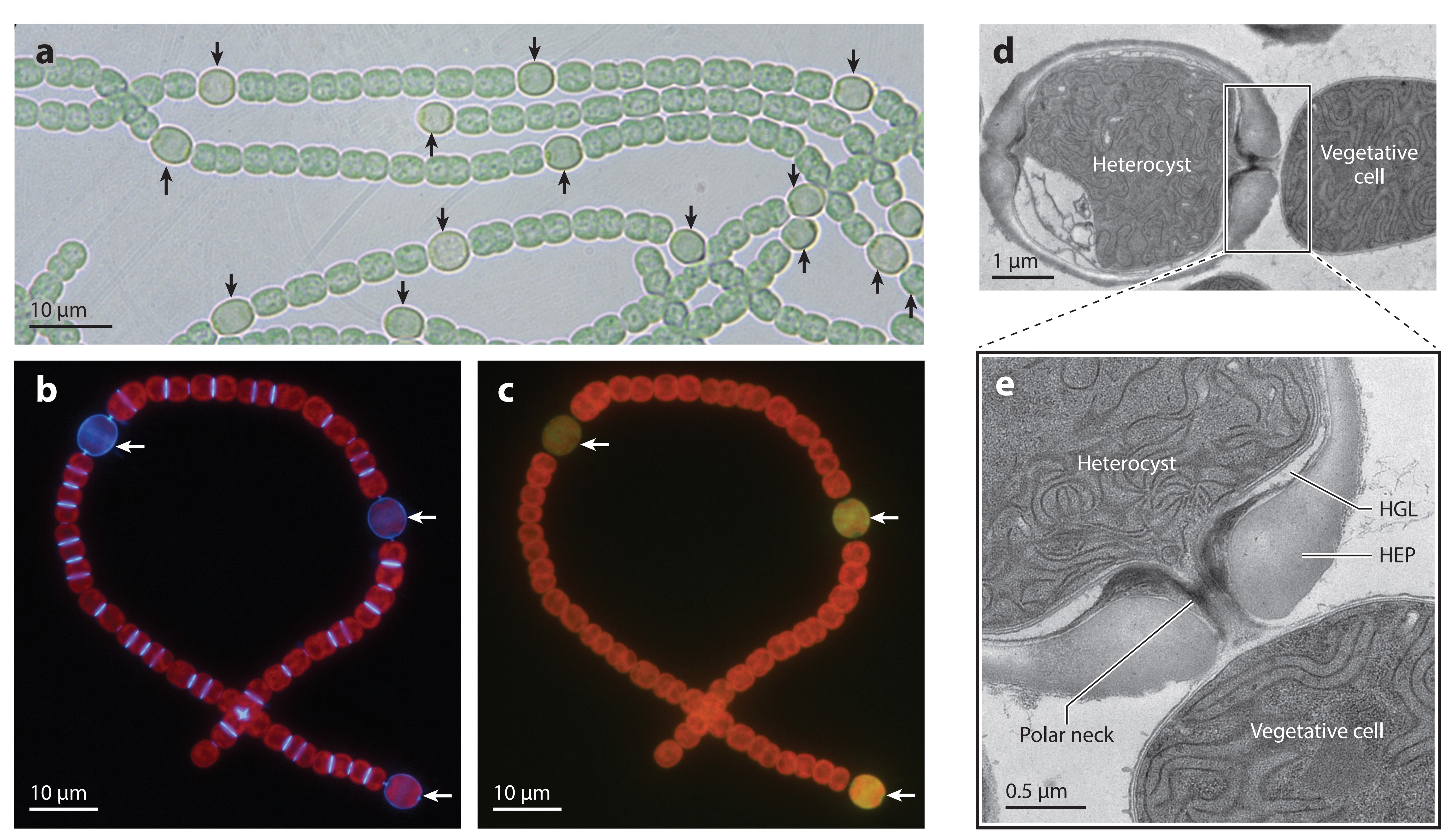Highlights
How Do Cyanobacteria Make Heterocyst?
Cyanobacteria are the earliest oxygen-evolving photosynthetic prokaryotes and their appearance was one of the greatest events on Earth. Many cyanobacteria also have nitrogen-fixing abilities and are major players in nitrogen cycle. Nitrogen fixation is catalyzed by nitrogenase, which is oxygen labile. Filamentous cyanobacteria, such as those from the orders of Nostocales and Stigonematales, evolved a spatial separation strategy, by fixing nitrogen in specialized cells call heterocyst, to reconcile the two incompatible biochemical reactions, oxygenic photosynthesis and nitrogen fixation.
A review article published in Annual Review of Microbiology by Prof. ZHANG Cheng-Cai’s research group from the Institute of Hydrobiology (IHB) of the Chinese Academy of Sciences expounds the research progress of cyanobacterial heterocyst differentiation and highlights the challenges ahead.
At the metabolic level, heterocysts eliminate intracellular oxygen by shutting off photosystem II and increasing respiration. At the morphological level, they form a much thicker envelope. These extensive metabolic and morphological changes create an internal microoxic environment suitable for nitrogen fixation.
Heterocyst development is a complex and orderly process, provides a unique model for prokaryotic developmental biology. The goal of this review is to comprehensively and systematically discuss recent advances in the understanding of the mechanism of heterocyst differentiation, including the major steps of heterocyst differentiation, cell-cell communication and pattern formation.
The process of heterocyst development includes four major steps: signal sensing (high carbon or low nitrogen), initiation, commitment, morphogenesis and maturation. Each step is coordinated and regulated by many genes. The researchers discussed the research progress of the molecular mechanisms of these steps, and draw a detailed regulation network of related genes.
During heterocyst development, intercellular communication is indispensable for the coordination of not only the developmental process but also filament growth. The process involves the septal junctions that traverse the septal peptidoglycan (PG) layers sharing by two nearby cells. These structures are similar to metazoan gap junctions and gate cell-cell communication rapidly by dynamic structural changes in response to environmental conditions.
Mature heterocysts are regularly intercalated among vegetative cells, being separated by 10–20 vegetative cells. Establishment of such pattern in filament cyanobacteria fits well into the Turing model, and mathematical simulation can reproduce the basic characteristics of the heterocyst pattern. The researchers elaborated the molecular mechanism of heterocyst patterning, revised the Meeks-Elhai model and proposed a three-stage model on the basis of current data.
The review could be helpful for the researchers in the study of heterocyst differentiation, and for those who are interested in prokaryotic cell differentiation and nitrogen fixation.

Anabaena sp. PCC 7120 filaments cultured under diazotrophic conditions. After deprivation of combined nitrogen (20–24 h), heterocysts are formed to perform nitrogen fixation. (Image by IHB)
(Editor: MA Yun)